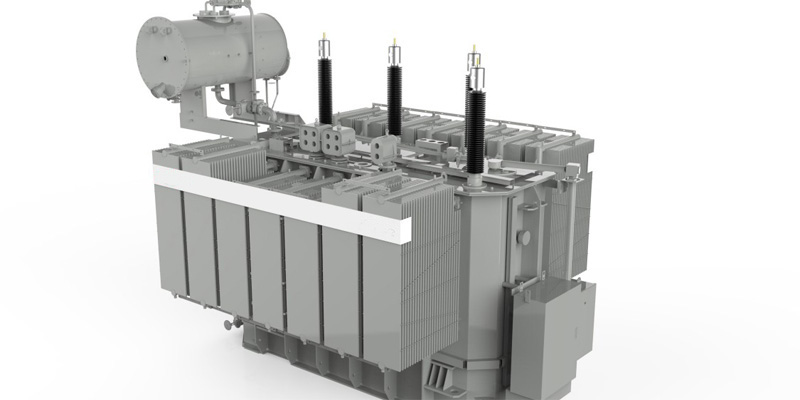
A dry-type transformer is a kind of transformer that never utilizes any insulating fluid where its winding or core is immersed in the fluid. Instead, the windings and core are kept inside a sealed tank that is pressurized with air.
There are two kinds of dry type transformers.
Cast resin dry type transformer (CRT) is utilized in those regions which are high in moisture. It is due to its primary and secondary windings are enclosed with epoxy resin. This encapsulation assists with forestalling moisture to enter to influence the winding material. Complete security is accomplished by this cast resin encapsulation so the transformer can work without interruption in profoundly moisture inclined territory. Therefore, this transformer is non-hygroscopic.
This type of transformer is accessible in ratings of 25 KVA to 12,500 KVA, with an insulation class of F (90 degrees C Temperature Rise).
This type of transformer has some featured benefits. They are-
This kind of transformer is made with the least combustible material as insulation of windings. Foil or strip in a continuous layer is used to make the windings of this transformer. But, for higher voltages, the winding is made of disks that are associated in series or parallel according to power rating as per voltage level.
The primary and secondary winding with the core is bound securely inside a vacuum protective box. Moisture Ingress Protection is high and it never gets influenced by moisture. This kind of transformer is available from 5KVA to 30MVA with insulation grade F(155oC) and H(180oC). It comes with Protection up to IP56.
This kind of transformer has a few benefits. They are-
Commonly, F and H class of insulation is utilized. We use these types of insulation to insulate the primary and secondary winding. It is because these classes have high temperatures withstand property, for example, 155 degrees C for F and 180 degrees C for H class of insulation. For the most part, varnish and polyester resin are utilized as insulation of the winding. Aside from the temperature withstand ability, mechanical strength; dielectric quality, and resistance to thermal shock are the fundamental capacities that must be satisfied by the insulation selected for the windings.
Generally, copper and aluminum are utilized to make the winding or coil. Even though copper is a better conductor, aluminum conductor wound transformer has minimal cost and weight. For a similar current rating, a copper conductor with low cross-section is utilized as the winding material in the transformer. Copper coil gives more mechanical strength than the aluminum coil.
Core material determination is significant in the design of the transformer. Core material must have high permeability and less hysteresis loss. However, both can't be accomplished in any core material. Generally, silicon steel, CRGO, and some more are utilized to permit the least hysteresis loss with higher permeability.
The life of the transformer relies upon the breakdown of winding insulation because of the temperature rising impact in winding due to overloading. Ordinarily, class B, F, and H installation are favored for the dry-type transformer to withstand a higher temperature gradient including surrounding temperature. Hence, the design of the transformer must be finished in terms of the rise of the temperature of working full load conditions.
No-load losses mean loss of core and eddy current that is free of loading condition. However, in loading condition loss of copper happens that incorporates the iron loss to expand the value of voltage regulation, for example, poor voltage regulation. Leakage reactance and winding resistance must be inside moderate value to limit this loss and better voltage regulation, subsequently higher proficiency.
Dry-type transformers provide safety again fire and leakage, which also reduces concerns associated with environmental and health. These kinds of transformers are moisture-proof and have enhanced impulse and short circuit quality. Dry-type transformers have wide significance in the residential and industrials segments. Owing to the various benefits of dry-type transformers, the market is probably going to see a surge in the next few years. The Global Dry Type Transformer Market size is expected to rise at a market growth of 6.9% CAGR during the forecast period.